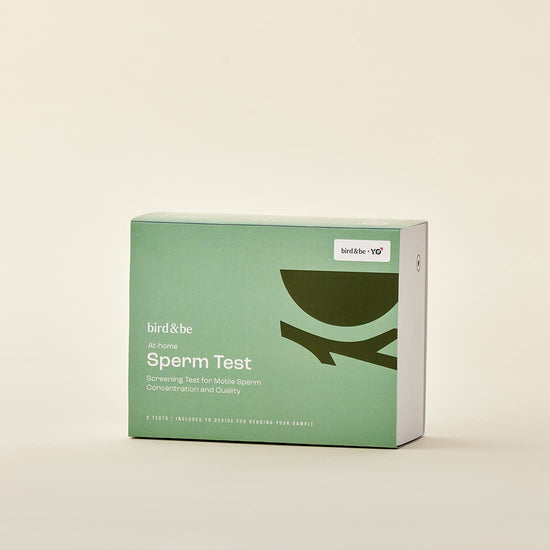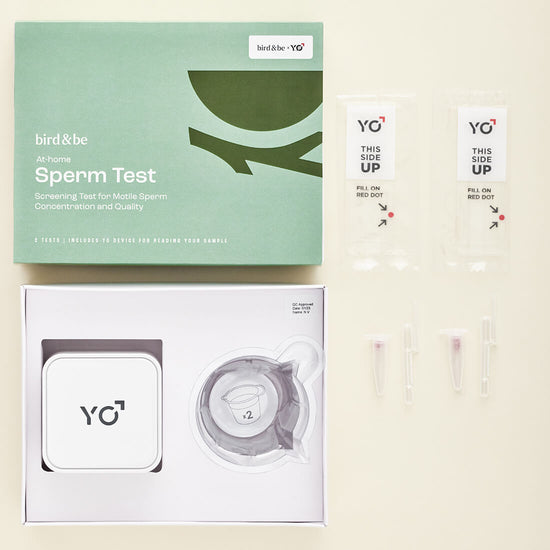In the past several decades there has been a lot of controversy as to whether global sperm counts have been declining and if that means that overall male fertility is also declining. This conversation was resurfaced again in late 2022 when a study was picked up by National Post in Canada with the headline: “Global decline in sperm counts 'could threaten mankind's survival,' new research finds” and across multiple other news outlets with varying degrees of inflammatory headlines. Cue the panic. The truth is, this is a well-researched topic and there is some validity to the concern that male fertility is on the decline. Here’s what we know.
Why are male sperm counts declining?
Declining sperm quality (considering characteristics like concentration and motility) is likely due to issues with sperm production. Different factors like nutrient status, inflammation, infection and toxin exposure can all interfere with sperm production and maturation. The most notable of these factors are hormone-disrupting chemicals such as phthalates and others which can bind to our estrogen and testosterone receptors.
We’re not talking about actual estrogens and androgen hormones in our food or the environment, but man-made chemicals that can attach to our sex hormone receptor sites, blocking their action or prompting unwanted reactions in the body. These compounds, also called endocrine-disrupting chemicals, are found in plastics, fragrances, and even certain foods (such as meat, cereals, and vegetable oils), and they can affect testicular function both in adulthood but also in utero (being exposed to these toxic chemicals while pregnant can cause testicular issues in a genetically male baby and could possibly affect that baby’s future fertility—this theory is outlined in The Barker Hypothesis, which proposes that adverse nutrition in early live, including prenatally, increases susceptibility to obesity, diabetes, hypertension and more.).
Another factor to consider in declining sperm quality is more socio-economic—advanced age impacts sperm. As more men are delay starting a family until they are older, they may not realize the quality of their sperm has declined, until they are immersed in the baby-making process.
What can you do to get your sperm as healthy as possible?
Infertility affects eight to 12 percent of couples worldwide, and up to 50 percent of cases are impacted by male factor—meaning that both male and female reproductive health concerns need to be addressed. There’s no disputing the global pattern of declining sperm counts and measures of sperm quality, so it’s important to understand sperm health and start addressing causative factors such as smoking, sleep deprivation, rampant infections and the regular use and exposure to toxins. Checking in on your own sperm health, even prior to trying to conceive, is a great way to gain insight into your own reproductive health.
The research
1992
In 1992, a ground-breaking report by Carlsen et al., which looked at 61 studies between 1940 and 1990 (including sperm analyses from almost fifteen-thousand men from 23 countries), reported a significant worldwide decline in sperm counts. They found that the average sperm concentration decreased from 113 million per mL in 1940 to 66 million per mL in 1990. This was a huge deal that got the attention of the media, but it left many scientists questioning the validity of the study itself due to the large time span (significant changes in how testing is done happened over the course of the 50-year study), the lack of consistency between labs and technicians and the fact that most of the samples from the United States came specifically from New York.
1997
Five years after Carlsen’s report came out, a few other scientists (Swan et al.) decided to look at Carlsen’s data and reanalyze it, adding in data that extended to 1996. They found that average sperm concentrations, after controlling for abstinence time, age, and collection method, were declining in the United States by 1.5 percent per year and in Europe by about 3 percent per year, but not in non-Western countries. This was greater than the value proposed by Carlsen (1 percent decline per year), but the conclusion was the same.
2000
A regional study in Paris, France looked at samples from 1,351 fertile semen donors and found that sperm counts had significantly decreased by 2.1 percent per year, going from 89 million per mL in 1973 to 60 million per mL in 1992. This study accounted for multiple different factors that could have messed with results. For example, the method used to analyze semen samples was the exact same during those 20 years; the donors were healthy volunteers who had fathered at least one child in the past; and the technicians that worked at this university hospital sperm bank all had the same training with the same methods and equipment used. The age of the sperm donor and the number of days of abstinence before producing a sample was also considered. After these factors were accounted for, researchers still found a 2.6 percent decline in yearly sperm concentration, a 0.3 percent decline in sperm motility, and a 0.7 percent decline in normal formed sperm with each year.
Let’s break it down even more. When that population was reduced to only include 28- to 37-year-olds with three to four days of abstinence (bringing the data pool down to 382 men), they found that the average sperm concentration declined by 3.7 percent each year going from 101 million per mL in 1973 to 50 million per mL in 1992. In this group, the amount of normal-formed sperm also decreased by 0.7 percent each year. This study was particularly important because it looked at other measures of sperm quality, not just sperm counts—both of which affect male fertility.
2017
In 2017 Levine et al. analyzed data from samples collected from 1973 to 2011. This included over 42,000 men across multiple geographic areas. They found significant declining sperm counts in Western regions by 1.4 percent per year (and an overall decline of 52.4 percent during these 38 years).
2022
Levine et al were at it again in 2022 as they analyzed data from 1973 to 2018 in Asia, South and Central America and Africa, finding again, a significant decline in sperm concentrations by about 52 percent. They concluded that there is an accelerated decline in sperm counts globally. These consistent trends are painting a clear picture that we need to pay attention to male fertility.







